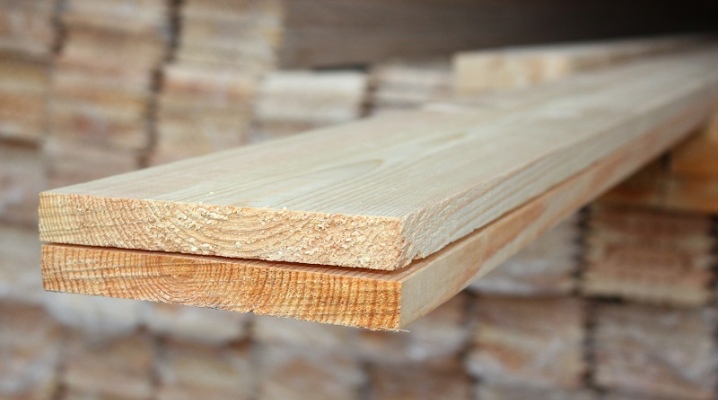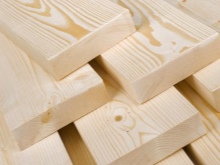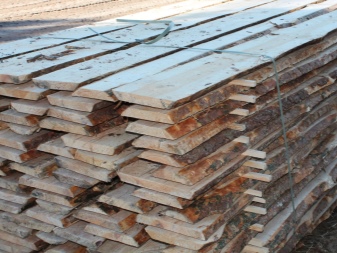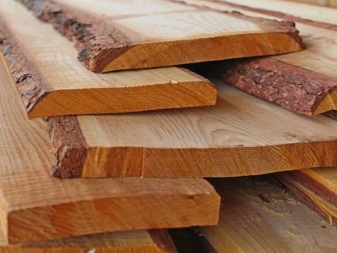Types of boards and rules for their selection

Planks are commonly used for wall cladding, flooring, battens, roofing, as well as for the construction of fences. However, not all types of boards are equally suitable for arranging a roof and for joinery. Therefore, it is very important to know what the main characteristics of these sawn timber are, how they differ, and how to determine their quality.



What it is?
People have been using wood for construction and finishing works since ancient times. Today, with the appearance on the market of a wide range of modern building materials, wood continues to hold a leading position. This demand is due to the durability of products, as well as the environmental safety of wooden products. The best-selling natural wood products are boards. They are irreplaceable when performing both main and auxiliary works. Boards are needed for finishing and rough finishing, for the construction of frame structures and installation of the battens.
Existing GOSTs define a board as lumber, the thickness of which does not exceed 100 mm, while the width of the product cannot be more than 2 times the thickness of the workpiece.



How do they do it?
Planks are obtained from logs during the sawing process. There are several basic techniques.
- Tumble sawing. In this case, the log is sawn with a band saw, less often a multi-saw machine or a sawmill is used. The result is two or more unedged boards of the required thickness.
- Saw cut with bar. The work is carried out on similar equipment. In this case, the timber is sawn into unedged and edged boards, that is, those that could get into the face of the bar with the edge.
- Made of unedged material. In this technique, edge cutting is performed on circular saws, as well as single-saw or multi-saw equipment. Such processing makes it possible to obtain edged timber from unedged timber.
- Sawing with milling - work is performed on a milling and sawing unit. In this way, you can get a high-quality edged workpiece in one pass.



Views
Boards can be solid or spliced. The former are cut from one piece of wood, the latter, using four-sided milling, are made from short segments. In terms of strength, they are significantly superior to solid ones, they are devoid of internal stresses, and they do not lead due to shrinkage.
Depending on the cut of the edges
There are three types of boards depending on the degree of sawing of the edges.
- Unedged - timber, the edges of which are not sawn. In fact, they are a fragment of a log. Such materials are commonly used for roof sheathing, flooring and sheathing. They can be used to build a barn, a bathhouse and other outbuildings, and similar materials are optimal for building a fence.


- Edged boards with wane (semi-edged) - in such timber, one of the edges is completely a lateral fragment of the log, and the second edge is even.
These materials are used in the same way as unedged materials.


- Edged boards - products in which both sides are cut exactly. Such blanks are most in demand in the construction and furniture industry; they are used in a wide variety of areas, from the creation of furniture to the construction of various objects.


Depending on the cut of the outer plate
Boards are also classified into several varieties, taking into account the appearance of the outside:
- obapol - in such a board, the inner face is completely propylene, and the outer one is only partially or not at all;
- humpback obapol - a material in which the amount of cut of the outer face does not exceed half of the total length;
- boardwalk obapol - a board in which the amount of cut on the outer face exceeds half of the total length;
- slab - one-sided cut, the upper part of the back side looks slightly rounded;
- a slab is a slab in which the amount of cut on the outer surface is more than half of the total length.



Depending on the location in the log
Depending on the location inside the original log, all boards can be core, side or center. The core ones differ in their density and shade, when they dry they often crumble, therefore they usually have low grades. Lumber from side fragments may have defects - this is due to the fact that such areas are often exposed to the penetration of woodworm insects.
The highest quality building materials are obtained from the central harvesting areas.


Depending on the planing processing
There is another classification of boards, which is influenced by the type of planing:
- planed or folded - planed lumber, in which both edges or one of the layers are planed;
- one-sided planed - a workpiece that has been planed on only one side;
- double-sided planed - a board planed on both sides;
- unplaned - rough, unprocessed material, used in rough work.
Regimental boards are a separate type of such boards. They are smooth-planed and have rounded edges; they are popular for lining baths.


Varieties
Depending on the quality, any boards are divided into grades. For coniferous wood, there are 5 varieties, sawn timber from hardwood can be only 3 varieties. The grade is determined by the total number of defects and imperfections in the lumber. The higher the grade, the better the product quality.
- Selective boards - these materials are also called business materials. In this case, some minor defects are allowed, which are subject to strict regulation. Serious defects such as rot, mold marks and ring cracks are not permitted.
- First grade - may differ in terms of standards for coniferous and deciduous trees. In this case, sprouts, blue and browning are either not allowed, or are standardized by GOSTs. Small cracks are possible on the surface.
- Second grade - some small defects are allowed here, most of them are subject to standardization.
- Third grade - on such boards you can see spots, as well as minor fungal lesions.
- Fourth and fifth grade wood is found exclusively in coniferous materials - these are substandard boards. Most of these defects cannot be normalized.



Tip: when choosing lumber, do not rely on the indication of the grade declared by the manufacturer.
The fact is that even selected sawn timber may have minor microcracks. When dry, they can go inward and destroy the structure of the wood. That is why every board in a batch needs to be inspected visually. Special attention should also be paid to the presence of mold and rot - they often appear on the surface during the transportation and storage of timber.

Dimensions (edit)
For sawn timber from coniferous wood species, the following dimensions are set:
- thickness - 16, 19, 22, 25, 32, 40, 44, 50, 60, 75 mm;
- width - 75, 100, 125, 150, 175, 200, 225, 250, 275 mm;
- length - in the range from 1 to 6.5 m with a step of 0.25 m, for the production of packaging containers - from 0.5 m with a step of 0.1 m.
For hardwood lumber, other standards are provided.
Thickness - 19, 22, 25, 32, 40, 45, 50, 60, 70, 80, 90 mm.


Width:
- for edged materials - 60, 70, 80, 90, 100, 110, 130, 150, 180, 200 mm;
- for unedged and one-sided edged - 50 mm and more with a step of 10 mm.
Length:
- for hardwood - from 0.5 to 6.5 m in increments of 0.1 m;
- for softwood - from 0.5 to 2.0 m in 0.1 m increments and from 2.0 to 6.5 m in 0.25 m increments.


Nuances of choice
To choose the right board, first of all, you need to pay attention to its appearance, and also require the seller for certificates of conformity. It is necessary to designate in advance the functions that are placed in front of the building material. For example, for interior cladding of living quarters, edged products should be used. Unedged timber impregnated with antiseptic solutions is suitable for facade installation. It is extremely important to determine in advance the size and shape of the workpiece.
If you have no experience with lumber, and you cannot figure out the choice on your own, it is better to consult before going to the store with the person who is responsible for the main work - he will be able to say exactly which boards you need and what to sharpen Attention. You shouldn't choose the cheapest products. Wood is a rather expensive building material, but at the same time it is of very high quality. If you intend to build a reliable home, be prepared for significant expenses.


One of the key factors in choosing a board is moisture. The critical factor in this case is the area of use of the material. It is one thing if you are going to build a fence, and quite another thing is a residential building, which should be windproof. Accordingly, during construction, it is important to minimize the risk of cracks, especially where door frames and window structures will be mounted. It is important to understand how these gaps appear if all the main details are precisely adjusted during construction.
The reason is that timber is a living timber, therefore, even in the finished structure, changes in forms constantly occur, they become a consequence of the shrinkage of the building material. The higher the moisture level of the wood used, the more unpredictable shrinkage will be. Any plant is permeated with vessels, through which the mineral components, dissolved in water, come from the roots to the branches and leaf plates. If the board is made from freshly cut sawn timber and immediately went on sale, then the moisture level in it will be natural.
If the workpieces have been dried in an industrial environment, such boards are called dry.


In boards with natural moisture content, it usually exceeds 22%. Their use in construction and decoration involves some risk, since shrinkage occurs as they dry. In this case, it is better to give preference to timber obtained from wood harvested in the cold season. In frosts, the flow of sap in the trunks is suspended, because the level of natural moisture of the tree decreases many times. Thus, winter wood contains much less moisture than that which was harvested at other times of the year.
Dry timber is considered to be the moisture content of which is not higher than 22%. In this case, the drying method can be chamber or natural. Natural is performed at special enterprises, as well as directly on construction sites. At the same time, the boards are stacked, and air gaps are left between the individual rows - this contributes to free air circulation. From above, such a stack is covered with a film or other waterproof material to protect it from rain and snow. Chamber drying is carried out in a special oven, this allows you to reduce the degree of humidity to 10-12%. However, this method requires an impressive energy consumption, and accordingly, the final product is quite expensive.
The use of such boards is not economically feasible when installing frames in open areas - in this case, the wood begins to absorb water from the air.



Another important factor that should be focused on is the acquisition of moisture-resistant "living" trees (the so-called "green forest") or dead wood. It is easy to guess that the "green forest" is obtained by sawing living trees. Dead plants, usually damaged by pests, become material for dead wood. The moisture content of the dead wood is less, but the quality of such boards is also low. Often they are affected by insect larvae, rot is often found on them. Dead wood can be distinguished by its grayish color; the mass of products from these logging areas is much lower.
For the manufacture of boards, coniferous and deciduous types of wood are used, each of which has its own advantages and disadvantages. So, ephedra contain resins with antiseptic substances. This prevents the appearance of fungi and mold on the surface of the lumber. That is why coniferous wood is usually used for the construction of structures used in a humid environment.


The most affordable material is pine - it tolerates high humidity well, is particularly dense and durable. Spruce lumber is slightly less durable, but in terms of water resistance they are equal to pine. Compared to pine and spruce, cedar is more durable and resistant to decay. But on the territory of our country, it grows infrequently and therefore is very expensive. Larch is far superior to the vast majority of conifers in strength, but it is not so resistant to the action of pathogenic microflora.
Hardwoods are more difficult to tolerate contact with moisture, they are more often used for facing and other internal work, or in those places where contact with moisture is minimal, for example, when arranging rafters under the roof. In terms of strength parameters, oak, ash, birch, beech, maple, acacia, and teak are significantly superior to most conifers. Exotic woods are especially appreciated - they are distinguished by their unusual color and beautiful texture.



Areas of use
Boards are commonly used in construction work.
- Frame structures. Frame house building today has become ubiquitous. Its main advantages are the speed and ease of installation of such structures. When constructing the frame supports, you cannot do without boards. In this area, any type of lumber is used - dry or raw, edged or planed, it all depends on the planned construction time and budget. If you have enough time, you can purchase boards of natural moisture and dry them yourself at the construction site.
Usually, for the construction of frames, lumber with a width of 120-200 mm and a thickness of 40-50 mm is used.



- Floor. Logs, rough flooring, as well as finishing flooring are made from the boards. Lags perform the functions of a basic support, therefore, boards with a thickness of at least 50-60 mm are usually taken for them. Since the flooring is exposed to moisture, it is better to give preference to coniferous wood. Such products are certainly treated with antiseptic impregnations to protect them from decay. For the subfloor, the appearance of the building boards is irrelevant - in this case, you can purchase ordinary edged materials or a thin profiled floorboard with a thickness of 30-35 mm. When installing floor structures that experience increased mechanical stress, preference should be given to thicker options.



- Roof. Boards are indispensable when installing the rafter system. Usually, for the manufacture of rafters directly, as well as jumpers, boards with a thickness of 50 mm are used. Another fundamental element of the roof is the lathing, the whole structure is supported on it. The ceiling board can be solid or sparse, the thickness of the workpiece in this case is 25-35 mm.



- Formwork. Boards are used in the form of formwork when pouring a concrete foundation. Edged material is best suited for such work.



- Other buildings. Boards are in demand for the construction of gazebos, baths, country houses and outbuildings. The material is widespread in the manufacture of furniture, as well as in other works when the texture of the material is of fundamental importance. It is better to give preference to dry flat boards, non-planed ones must be trimmed first. When buying material, in this case, you should focus on the possibilities of the budget. The cheapest solution would be an edged board of natural moisture from spruce and pine - you can dry such a workpiece yourself. Dry planed models are more expensive, but the quality of the coating will be much higher.
A grooved board that has been folded will be a universal solution - it can be used for all types of carpentry and construction and repair work.
















The comment was sent successfully.